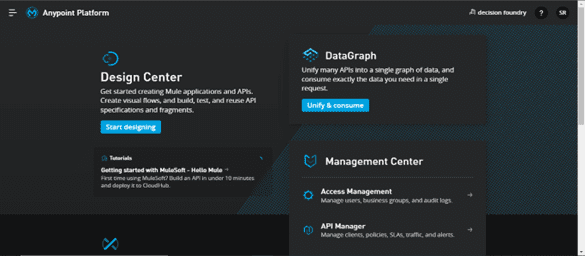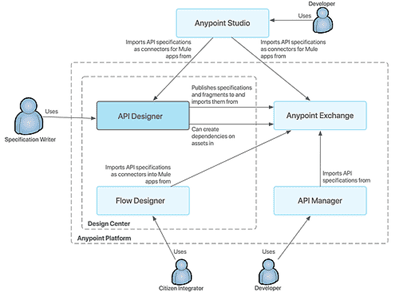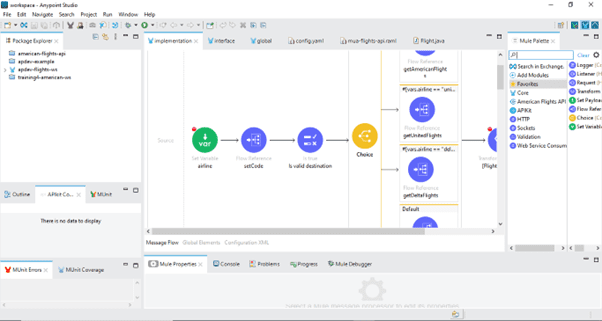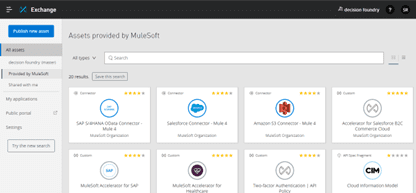Selecting the right enterprise integration platform is one of the most important strategic business decisions a company can make. All companies in the modern world, no matter their size, age, or industry, are finding themselves in need to upgrading to the latest technology to stay connected. Owing to digital transformation, companies need to embrace technology in order to compete and win. It’s to their advantage to think about how to integrate systems, applications, and data; the risks of not engaging with these technologies are high and the opportunities afforded by digital transformation are great.
But to make technological innovation work, companies must tie everything together with an enterprise integration platform to take advantage of existing data assets and ensure smooth functionality, speedy delivery, and business utility of any tech initiative. Competing and winning in a global, hyper-competitive, fast-moving world with increasing customer demand requires that multiple technologies are harnessed to meet these trends. APIs (Application Programming Interface), IoT (Internet of Things), big data, and mobile strategies all become increasingly more important to fend off business disruption, compete against new market entrants, create new revenue streams, and meet customer demands. But without an enterprise integration platform, not only will all these technologies be unable to mesh but they won’t be useful to the business.
The key to unlocking the value of these technologies remains the ability to not only collect and interpret intelligent streams of data, but also to assemble components to quickly create new sets of capabilities. To make this happen, businesses must have integration. Integration isn’t just the coordination of hardware, applications, and data; it’s also ideas, internal teams, external partners, and new business processes as well. This is where MuleSoft comes in.
MuleSoft’s enterprise software platform aims to provide the most flexible approach to integration that allows organizations to connect applications, data, and devices, regardless of whether they are on-premises or in the cloud. Anypoint Platform intends to solve challenging integration problems across SOA (Service-Oriented Architecture), SaaS (Software as a Service) and APIs, in a lightweight, developer-friendly way. MuleSoft’s approach to integration will offer the speed and ability to evolve necessary to succeed in the digital era.
Let’s take an in-depth look at Anypoint Platform, MuleSoft’s consolidated and flexible enterprise integration setup, and find out how you can transform your business.
What is Mulesoft?
MuleSoft brings a new unified solution for automation, integration, and Application Programming Interfaces (APIs) that easily automates any workflow and/or system for your team. It helps your team to quickly adapt to constant change and business complexity, as it includes no-code capabilities to automate repetitive manual tasks using bots with MuleSoft RPA (robotic process automation). This is fully integrated into Salesforce Flow, which is a comprehensive suite of automated technologies used to increase efficiency and productivity and deliver unparalleled experiences. MuleSoft can connect any system, application, data, and device to unleash the power of Customer 360, which is the ability to create a ‘master file’ of all information collected regarding a specific customer in one easily accessed record. The combined power of MuleSoft and Salesforce enables our clients to accelerate the digital transformation of their records and consolidate them.
Together, MuleSoft and Salesforce give companies the ability to unlock data across systems, develop scalable integration frameworks, and ultimately create differentiated, connected experiences at a rapid pace. This can be done across various integration patterns, Salesforce products, and third-party systems — the integration possibilities are endless. These include developing integrated applications with Lightning Platform, Heroku, Slack, and Tableau to achieve a single customer view in Sales Cloud and Service Cloud. It can connect to normally separated third-party systems and provide Salesforce Customer 360 with legacy sources to synchronise order, invoice, and product information. With MuleSoft, repetitive work can be eliminated and that helps to increase employees’ productivity and reduce costs for customers. Mule, the base software of Anypoint Platform, is a flexible ESB (Enterprise Service Bus) solution that helps to increase customer usability by implementing a simple, well defined, “pluggable” system that can be expanded as needed.
MuleSoft Supports Seamless Business Integration
MuleSoft recognizes the importance of establishing a robust business integration environment and delivering a single platform to keep the enterprise connected. With MuleSoft’s Anypoint Platform, businesses can connect processes, applications, services, systems, and data, on-premises and in the cloud, quickly and easily. SaaS based marketing applications such as Marketo or Twitter can be seamlessly integrated with CRM (Customer Relationship Management) solutions such as Salesforce CRM, Siebel, or Zoho CRM, as well as email clients like MS Outlook and on-premise databases.
Organizations can merge new e-commerce partners into the system faster, support branch retail stores without local IT resources, enable new distribution channels, and simplify supplier and purchase order transactions through SAP (System Applications and Products) integration. CloudHub, which is an Integration Platform as a Service (iPaaS), and Mule as an ESB, provide organizations exactly what they need to integrate disparate SaaS, on-premises applications, services, and databases throughout the collective systems in use.
Anypoint Platform:
Anypoint Platform solves the most challenging connectivity problems across SOA, SaaS, and APIs. It’s a unified, highly productive, hybrid integration platform that creates an application network of apps, data, and devices with API-led connectivity. The benefits of using the Anypoint Platform are:
- Undivided Connectivity: You can connect apps, data and any gadget anywhere, on-premises or in the cloud.
- Lowest Friction: You can quickly build and change your application network with user-friendly tools and open standards- APIs, connectors, pre-built templates and various reusable building blocks.
- Future-Proof: With a flexible architecture, Anypoint Platform can evolve as your business does; it is a system that scales for any size company and can be shaped to your needs.

The Anypoint Platform consists of the following major components:
- Anypoint Security,
- Anypoint Design center,
- Anypoint Management center,
- Anypoint Exchange,
- Runtime engine & services,
- API-led connectivity,
- Application Network,
- DataWeave.

Design Center:
Anypoint Design Center includes a web-based tool, API Designer, where MuleSoft developers design and create API specifications and fragments. Fragments are portions of code that are reused across multiple APIs. Once your API specification or fragment is ready for sharing with the rest of the organization, you then publish it to Anypoint Exchange for testing and approval. This development approach is called Spec-Driven. Before moving into the API implementation phase, it’s crucial to get the ‘sign-off’ from the business and other teams involved. They will test the API returning mocked results, provide initial feedback and validate requirements. Anypoint Exchange is a virtual market to share, discover and reuse APIs, connectors, templates, etc.
The other part of the Design Center, Flow Designer, is used to create Mule Applications that connect systems into workflows.

Anypoint Studio:
After you have created your API specification, published it to Anypoint Exchange and received the ‘green light’, you are ready to start the implementation. Anypoint Studio is a desktop integrated development environment (IDE) for building your APIs. To speed up the development process and minimize potential errors, the Studio offers numerous ready-to-use modules for common integration purposes.

Anypoint Management Center:
The Management Center is the operational hub to manage, monitor, audit and analyse an APIs’ performance. It has 3 components:
- Runtime Manager, which allows you to deploy and manage applications and monitor their performance.
- API Manager, which plays a very important role – it applies security policies to control access and unlock data with API gateways.
- Analytics, which provides visibility into API traffic and provides performance metrics.
Anypoint Exchange:
MuleSoft Anypoint Exchange is like a farmers’ market for APIs. There is a large central market, MuleSoft Exchange, as well as local markets that are hosted by organizations for internal use only. This is the place where you submit your API specification or fragment, and it is the first place to check for any integration assets. You can find various templates, connections, and fragments to reuse in your application to save time and effort.

DataWeave:
DataWeave is a programming language designed by MuleSoft for accessing and transforming data that travels through a Mule application. The Mule runtime engine incorporates DataWeave in several core components like Transform and Set Payload, which enable you to execute DataWeave scripts and expressions in your Mule app.
DataWeave scripts act on data in situations in Mule called events, which are an action or occurrence that has significance for system hardware or software. Most commonly, you use it to access and transform data in the message payload. For example, after a component in your Mule app retrieves data from one system. You can use DataWeave to modify and output selected fields in that data to a new data format, then use another component in your app to pass on that data to another system.
Why is MuleSoft ideal for Enterprise Data Integration?
It is an Open-Source tool:
Being an open-source tool means most of the components are modifiable by users. For instance, if you require a specific feature, you can quickly develop one. MuleSoft’s community website provides many downloads and helps users understand new features with tutorials. Since it is an open-source tool, the MuleSoft community forum encourages users to ask questions and even report problems, allowing them and the MuleSoft staff to make new developments.
It has an Intuitive Development Environment:
MuleSoft has a highly intuitive environment that encourages constant development. It has an exclusive development system called Mule Studio that integrates standard tools such as GitHub and Maven. By using Mule Studio, you can quickly develop user interaction abilities with just a simple drag and drop. You can also select different components that will help in configuring your flows and modernizing your work environments
Loads of interesting features:
The MuleSoft Integration tool has hundreds of components already built within Mule Studio. Some of these features are exactly what you require for integration development:
1. Message Processors –
- Components – REST, SOAP, JavaScript, Java, Python
- Routers – aggregators, splitters, round-robin
- Scopes – Flows, sub-flows, for-each, a-synchronous
2. Transformers –
- Built-in transformers – convert XML, JSON, File, Byte Array, Object, String.
- Dynamic transformer – Anypoint dynamically converts between flat (CSV, fixed-width file, Excel) and structured (XML, JSON, POJO objects, key-value maps) formats.
3. Message Sources –
- 3HTTP, FTP,
- TCP, UDP,
- File, Database
4. Connectors – Mulesoft has a diverse list of connectors to third-party applications such as Amazon, Facebook, Google products, MongoDB, Salesforce, and Twitter. Since it’s an open-source tool, you can always create your required feature.
It is highly scalable and future-proof:
MuleSoft integration tool easily adapts to new systems, new versions of software, and upgraded data sources. Allowing your company to respond quickly to evolving market scenarios and take advantage of new opportunities. The MuleSoft integration platform provides a strong foundation for the future, as is one of the few hybrid integration platforms exclusively for API-led connectivity. This allows you to quickly create multi-cloud solutions without needing to rebuild applications from scratch.
Finally, it increases engagement levels and cuts down costs:
MuleSoft’s Anypoint Platform provides accurate customer information and helps build a 360-degree customer view. This allows you to deliver more personalized experiences, anticipate future trends, and increase customer retention. Apart from raising engagement levels, it’s also very user-friendly due to its built-in governance, visibility, and reusable assets. MuleSoft lowers maintenance expenses while facilitating increased productivity. Most importantly, it assists you in modernizing your legacy systems by using APIs to access them and make them part of the whole.
With a host of other exciting features, MuleSoft is one of the most efficient tools in the market for your enterprise data integration needs. It will provide your company with superior solutions that improve overall performance, boost operations, and accelerate your profitability. In short, it’s exactly what you need to navigate the modern marketplace with confidence in your systems.
